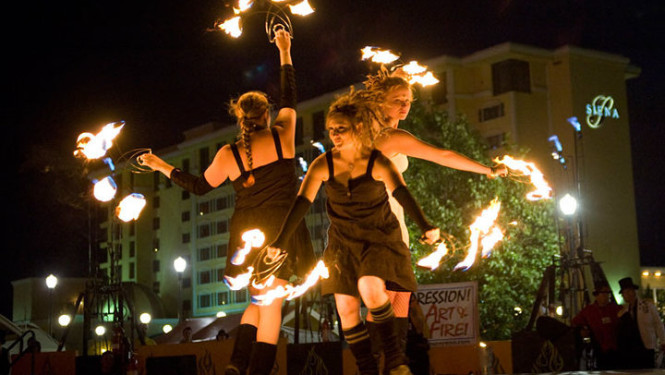Part of the blog series for the 2017 theme, Radical Ritual.
UCLA Anthropologist Dr. Megan Heller studies play — how we do it, why we do it, what impact is has — and when I asked her if she had any thoughts about this year’s theme, “Radical Ritual,” she came back with a challenging question:
What’s the difference between “ritual” and “play?”
Think about that question for a moment, and then think about the argument made by Heller (who is better known to many Burners as the Countess, volunteer-researcher with the Black Rock City Census) that whatever differences there are between “ritual” and “play,” they have a lot more in common.
“Play and ritual are both part of a category anthropologist Peter Stromberg calls ‘Meta-action,’ because they’re both associated with ideas and symbols and meta-level framings and commentary on everyday actions,” Heller said.
“The difference, in our society at least, in American society, is that the things we put in the ritual bucket are the ideas and commitments and groups of people that we acknowledge to be important. And play is associated with the ideas and symbols and commitments that we think of as powerful, having a strong effect on us, but not necessarily admirable.”
But in terms of how they work and the impact they can have on us, “play” and “ritual” may be manifestations of the same phenomenon: They both reshape how we think about and react to the world in the immediate moment, recasting the rules of what is and isn’t possible. And both can be very powerful influencers — teaching us things in ways that pedagogy alone cannot.
“Anthony Wallace, an anthropologist who wrote about ritual learning, he refers to a special kind of learning that happens in some kinds of rituals, where experience is rapidly reorganized under special conditions, which results in big changes in cognition and emotion and learning,” she said.
But Heller goes further, saying that there is something else that fits neatly into the category created by ritual and play, at least in a Burning Man context: Art.
“To me ‘play,’ ‘ritual,’ and ‘art are all these sort of meta-commentaries with sort of special realm of commenting and creating and imagining the way the world is, and the distinctions between those three things are not really important at Burning Man.”
And that’s a key distinction between the Burning Man experience of these forms of meta-action, and the experience of them elsewhere.
“In the default world you to go a museum for art, your church for ritual, your gym or your sporting event for play, and you don’t have those three domains overlapping very often.
“I think that’s very unfortunate, because the creative aspects of art, the significance of things we call ritual, and the freedom or learning that can take place in the playground — when those things get separated out and they can’t build on each other. So the fact that we get to do them all at the same time in whatever combination we want to, I think makes Burning Man a more powerful experience, the effect of meta-action, the power of meta-action, working in the realm of ideas and symbols, is ramped up, in a way.”
The combination of those elements may be part of what makes Burning Man such a liminal space, full of possibility, out of time, and super-saturated with meaning. You are constantly surrounded by art, by rituals, and by play, and they all interact with each other to create a unique and powerful environment.
“That to me is Burning Man,” she said.
Listen to our whole conversation in this podcast from the Burning Man Philosophical Center.

